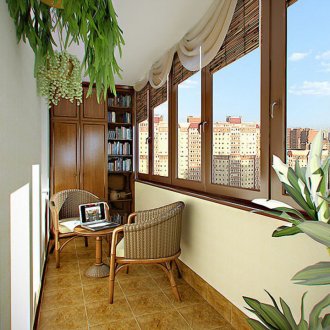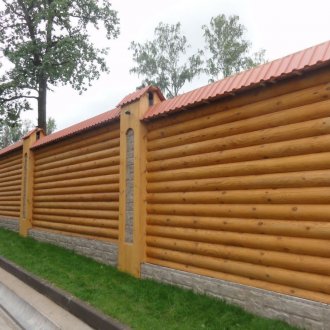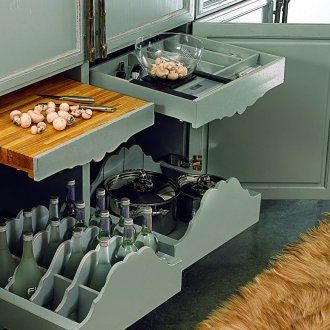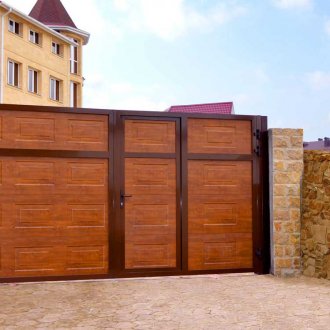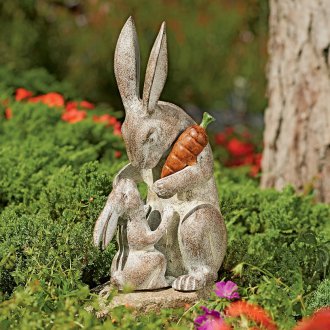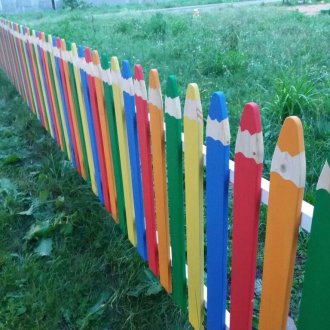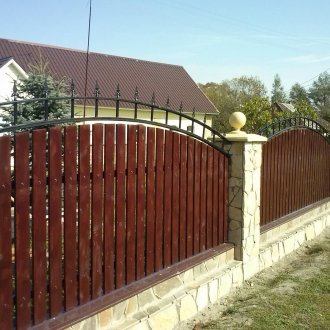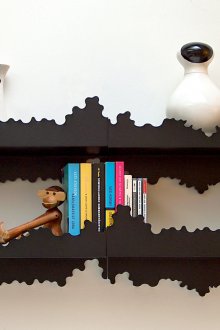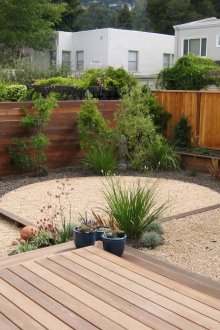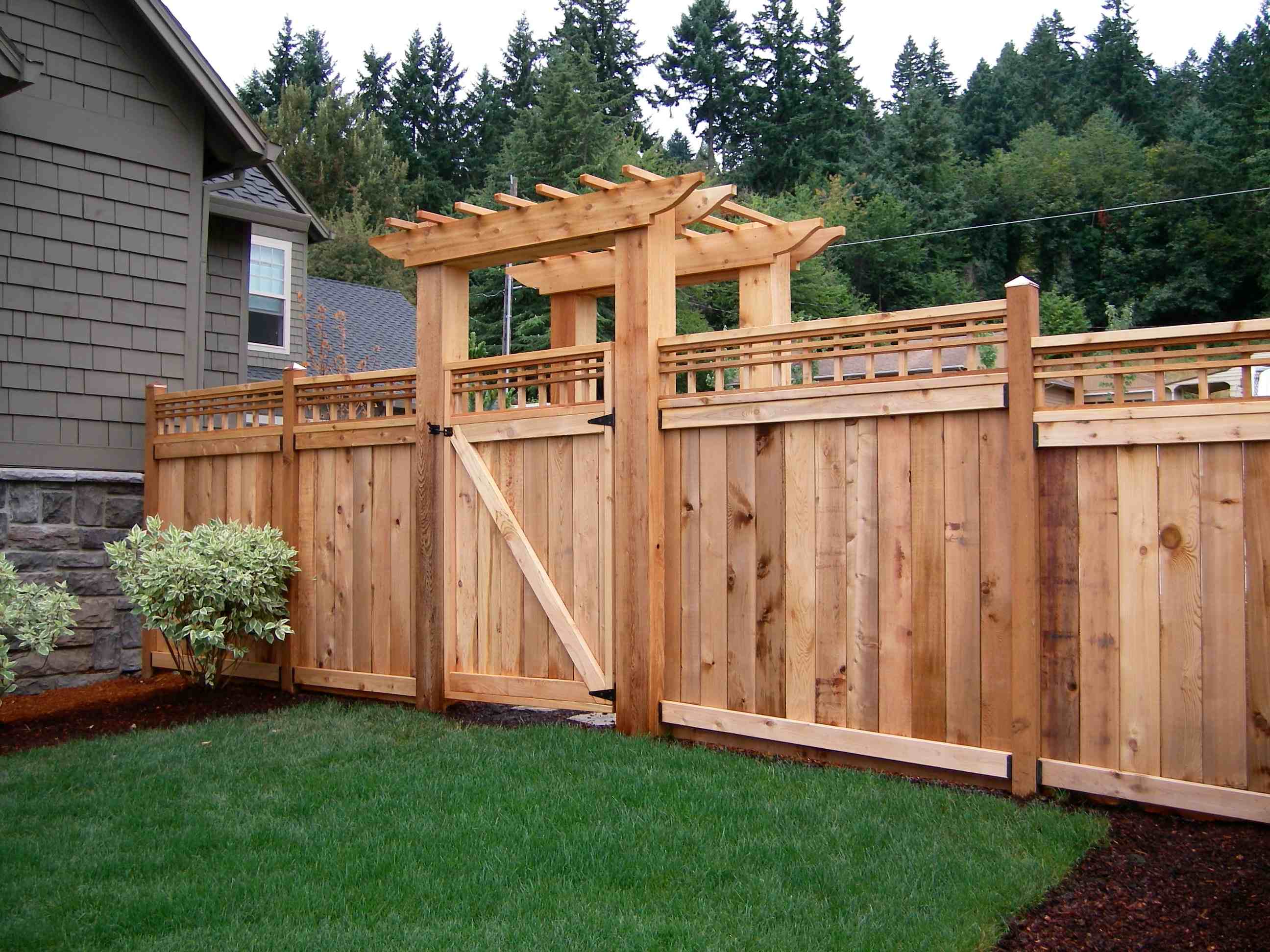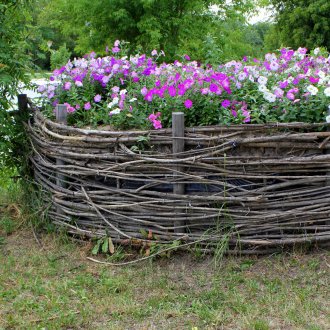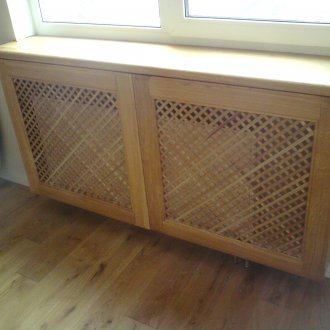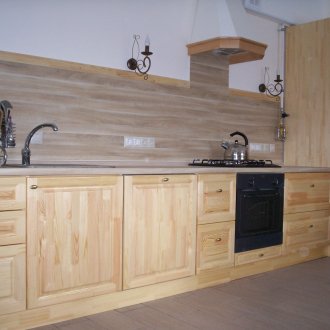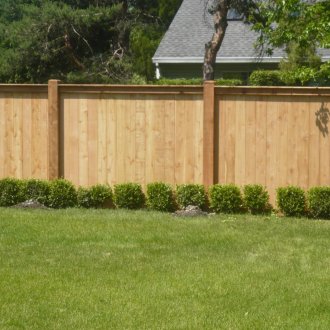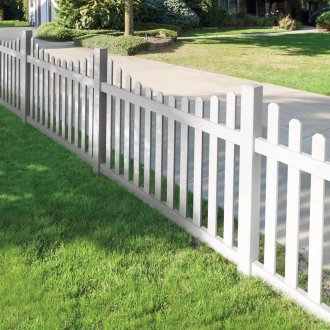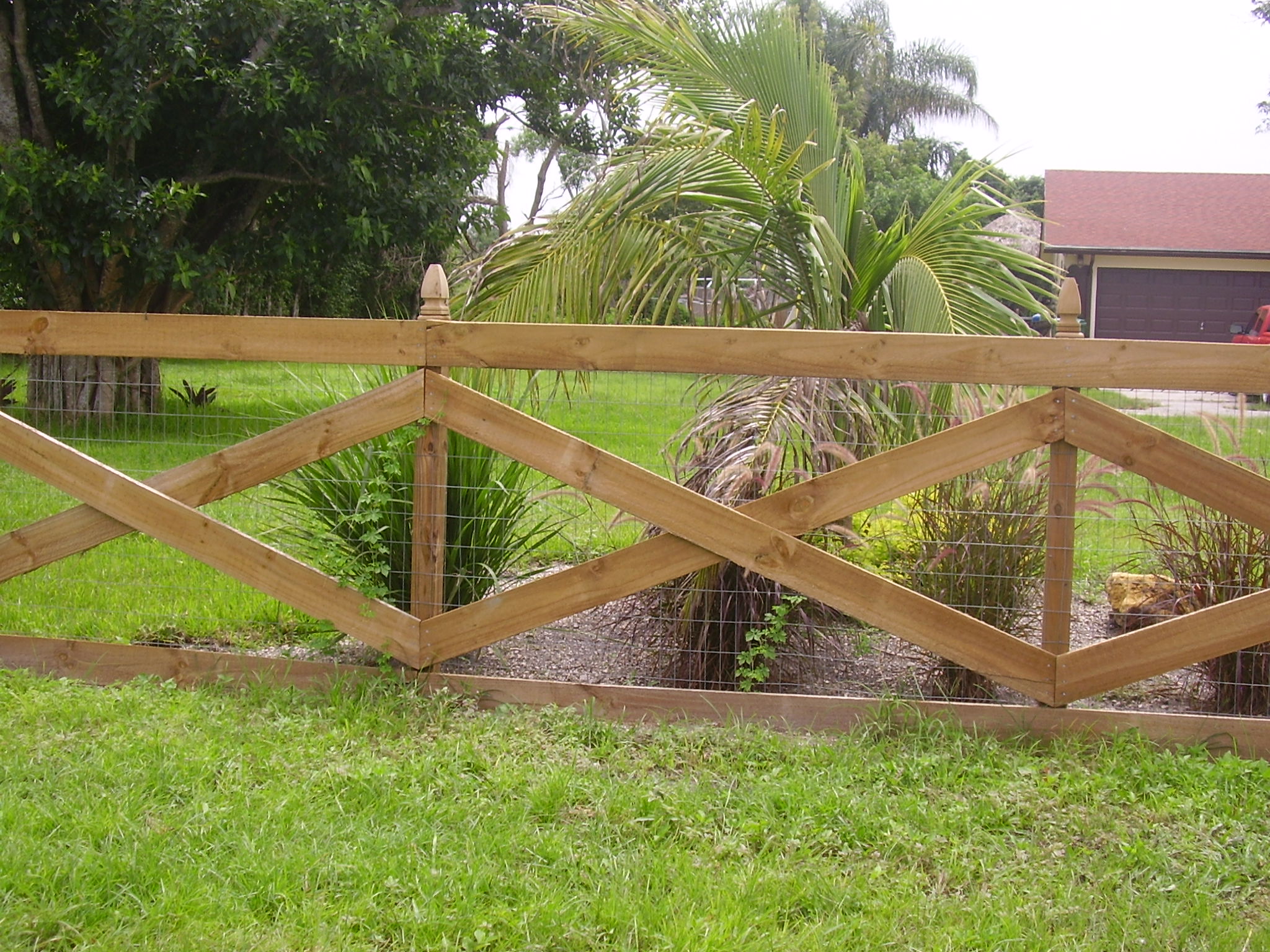Wooden fence: natural materials on guard of security (23 photos)
Content
At a subconscious level, many associate comfort and coziness with natural materials, which is why beautiful wooden fences for private houses are especially popular today: they combine original traditions and become the basis for the most daring design experiments. The presence of gaps between the boards is not only a kind of decoration, but also a condition for the penetration of sunlight into the entire household territory, which allows you to create full-fledged flower beds and compositions of trees directly at the fence.
Strengths and weaknesses of the material
A decorative wooden fence is attractive precisely because of its natural basis - this material is elegantly in harmony with the landscape of the countryside, but the quality and stability of the structure directly depend on the lumber used. So, the advantages of such fences for home and garden:
- simple installation;
- a solid high fence protects against wind, even a thinned version can significantly reduce the speed of gusts;
- environmental friendliness and availability of material;
- the possibility of coloring in any color, the creation of an original design project;
- the creation of an effective barrier against inappropriate other people's curiosity, dirt and attacks on private property.
Disadvantages of wooden fences:
- the material needs regular application of special protective coatings that protect the structure from the effects of precipitation, insects and fungus;
- wood initially has low fire safety (special compounds will help increase it);
- limited operational resource;
- exposure to the negative effects of seasonal temperature differences;
- In case of careless handling, mechanical damage quickly occurs.
An essential requirement for such fences for a private house can be called full compliance with the surrounding landscape. For example, a modern suburban avant-garde building will not be combined with the notorious small white hedge made from a pointed picket fence.
For the construction of fencing, it is customary to use cedar, pine and larch.
Common variations of wooden fences
Landscape designers offer to study the following popular types of wooden fences:
- A picket fence is low fences made up of stakes. They are driven into the ground without gaps, tightly in relation to each other.
- The picket fence is a classic wooden fence, it is based on horizontal crossbars to which planks of the same length and width are nailed vertically.
- Wicker horizontal fence of branches and thin trunks of trees, shrubs.
- Cross - a combined design, which also includes decorative reinforced concrete trunks in contrasting colors.
- A short flight of stairs - a fence of poles on which the lining is fixed. The resulting gaps are filled with overlapping boards (they are arranged horizontally).
- The traditional wooden fence is based on massive support pillars that can be mounted in any direction.
- Fencing for pasture - is formed by supporting pillars and two veins.
- Sectional trellised wooden fences for giving and the house.
Chess hedges with a clearance painted in contrasting colors are also welcome, brick pillars are usually used here for the frame.
The subtleties of creating a unique composition
Even the simplest option can be turned into a unique wooden fence, only decorating it with designer (home-made) accessories from improvised materials. The most successful techniques are described below:
- juicy colors and pointed tops - all that is needed to create a “set of pencils” in your own area;
- an ordinary plank construction can become a piano sticking out of the bushes if it is painted in a uniform white color. Next, on the formed surface, black bars must be scattered at the same distance;
- if the house is decorated with carved platbands, the carved picket fence corresponding in shape will look beautiful;
- original wooden fences collected from log cuts look spectacular. To create a harmonious exterior, you can lay out neat tracks from them;
- fences from a wooden beam can be cut according to a pre-prepared template, having performed, for example, a wavy edge. This is a rather time-consuming process, but the result will definitely please with its originality;
- if you want to create a fence-wattle fence, it is not necessary to arrange the components in the standard order, in particular, they can be braided;
- in the case when the choice fell on the board structure, the material can be laid not in one but in different directions;
- if time permits, it is worth painting each board individually, in which case the canvas will look very impressive;
- finally, someone decorates his hedge with numerous birdhouses, bearing both aesthetic and functional load.
The presented types of fences are available for independent manufacture, they do not require significant financial costs, only inexpensive materials, tools, and free time are needed.
Tricks for decorating a fence for a flower bed
If you want to highlight, emphasize the front garden, designers recommend stopping your choice on lower designs and painting them in white. When the design of the flowerbed, on the contrary, assumes its slight elevation, it is worth using a log picket fence, which will become a reliable frame for a dirt pillow. Openwork wattle, in turn, will create a frame for flowers that resembles a basket.
General rules for self-construction of the fence
If you do not know how to make a fence, take classic patterns and layouts as an example. The main material will be boards 15x2.5 cm, their length depends on the planned dimensions of the finished structure.
Initially, you need to pick up stakes of 60 cm and sharpen them - they will help to delimit the site and serve as a guideline for driving in supports. When choosing the height and elements of a wooden fence, it should be borne in mind that a very high canvas will obscure the area, which will adversely affect the vegetation of planted plants. Boards with a length of less than 1.5-2.5 m are also not worth taking, otherwise passers-by will become involuntary witnesses of everything that happens on the site. The material must first be aligned in length and processed using a grinding machine.
Many are attracted to beautiful wooden fences, the tops of boards in which have a semicircular or triangular profile - the workpieces are initially planed on a workbench. Ready sawn material will cost an order of magnitude more expensive than the "draft" option.
As supports, bars with a section of 75x75, 50x50 mm are used. They are immersed in the soil strictly perpendicular, moreover, it is desirable to coordinate the process using a plumb line. The surrounding soil should be carefully compacted, many for cementing such areas for greater reliability, because the strength of the entire fence will depend on the quality of the supports.
In order for the construction height to remain the same everywhere, you need to drive a nail into each beam at the desired elevation and pull the rope. The veins are connected to the supports with the help of self-tapping screws or nails, their standard section is 10x2.5 cm, the bottom is at a distance of 20-30 cm from the soil. The step everywhere should be the same, the beauty of the future structure depends on this. It is advisable to choose screws or nails such that they pierce the vein through and through, and, on the other hand, protrude a couple of centimeters - the excess is gently bent.
The conceived design of the wooden fence appears only at the last stage, when rails or bars are fixed on the veins. If you need a solid fence, they are installed end-to-end, the width of the gaps varies to the taste of the owners.
When the entire perimeter of the site is framed, you can proceed to the finish. First, boards and supports are carefully coated with varnish on both sides, treating each square centimeter protruding above the ground. Further, country fences are covered with frost-resistant paint, it is better if also in two layers - this measure will minimize the effects of temperature extremes and precipitation.
Ways to eliminate the main categories of damage
Under such conditions, wood is constantly exposed to an aggressive external environment and even after a full-fledged treatment, it begins to deteriorate after a few years. The fence can become covered with cracks, rotten or broken areas will appear. It will be easiest to replace a failed shtaketin: it is carefully removed with a nail puller or crowbar, a new element is fixed, it is painted.
It is more difficult to restore those fences for giving from a tree in which defects of veins are present. If the damage is minor, here you can use a galvanized iron pad, a “patch” of a wooden bar will be slightly less effective. If the pole breaks, you will have to reassemble this site using a new vein.
If the support that supported the whole section is out of order, it should either be strengthened or replaced. When a section is destroyed directly, the complexity of its restoration will directly depend on the method of fastening used to build the fence. The easiest way is if the structure is held at the expense of clamps, but problems can arise with the removal of nails - large ones are difficult to pull out without damaging the supports, and this circumstance must be taken into account even at the stage of design design.
